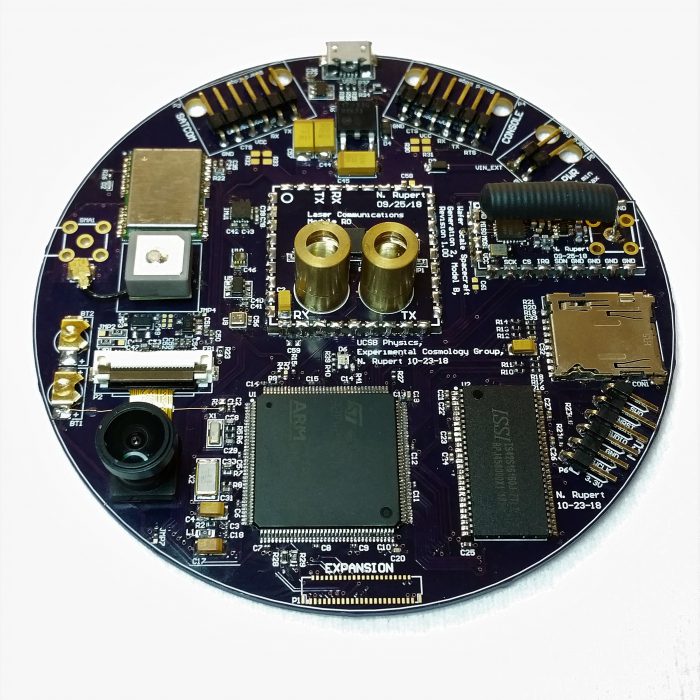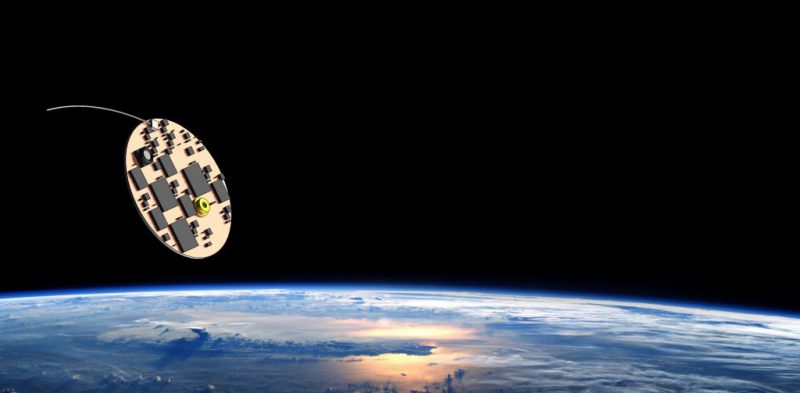A landmark test for the future of space exploration was held this past April 12. The first launch of a probe called StarChip.
Though not quite sent to space, this craft was lifted 32,000 metres (105,000 feet) into the atmosphere by balloon for the testing of its systems at near-space-high altitudes. This is about three times higher than commercial jets fly.

Up, up, and way! The StarChip prototype begins its ascent on April 12, 2019. (UCSB Experimental Cosmology Group)
So what is this rather improbable, quite adorable, possibly delicious-sounding probe all about? And why might it change everything why know about exploring space?
When 'nearby' is anything but...
Over the last few years, there have been all kinds of stories about nearby star systems that feature planets that could harbour life. It's a thrilling thought — finding a whole other solar system with its own unique version of life. Thrilling, that is, until you realize what 'nearby' means in space.
Take the nearest known planet that is suspected to have water: Proxima B. It is about 4.2 light years away. This doesn't sound so bad. A craft traveling the speed of light would take a little over 4 years to reach it. Except not only can nothing other than light travel that quickly, our fastest human sent spacecraft, Voyager 1, travels at 1/18,000th of that speed. So 18,000 times 4.2 years... ouch. Anyone interested in a 75,000-year wait?
StarChip is chipping in!

A spaceship looks like what now? (UCSB Experimental Cosmology Group)
Fortunately, science has a plan, and that's our friend StarChip! We've actually written about it before, but in a nutshell here goes:
A microchip-based disc about the size of a cookie would be pulled across space by a large sail that is powered not by wind but by a laser. Zap! Zoom! Scientists estimate that it could achieve about 20% of light speed, allowing it to reach Proxima B in just 20 to 30 years.
It may all sound far fetched, but then again, what sort of space travel didn't sound far fetched at one point in history?

A different kind of launch for a different kind of craft! (UCSB Experimental Cosmology Group)
The scientists behind StarChip are excited about the possibilities. StarChip performed very well in its April test. It took around 4000 images of the planet, and collected and transmitted other data without a hitch — and all while in an environment similar to deep space. Scientists will now use what they learn here to improve the so-called wafercraft with their eyes on a sub-orbital flight some time next year.
But Will StarChip really be able to travel 40 trillion kilometres to a whole other solar system? It would be remarkable if it could!
Contest alert
Don't miss our Science Odyssey Family Contest. Click HERE TO ENTER.
Science Odyssey is a two-week, Canada-wide celebration of all things science, technology, engineering, and math (STEM). Find activities in your area HERE.

 StarChip is not yet able to travel this high, but its developers are getting closer to this goal! (UCSB Experimental Cosmology Group)
StarChip is not yet able to travel this high, but its developers are getting closer to this goal! (UCSB Experimental Cosmology Group)









